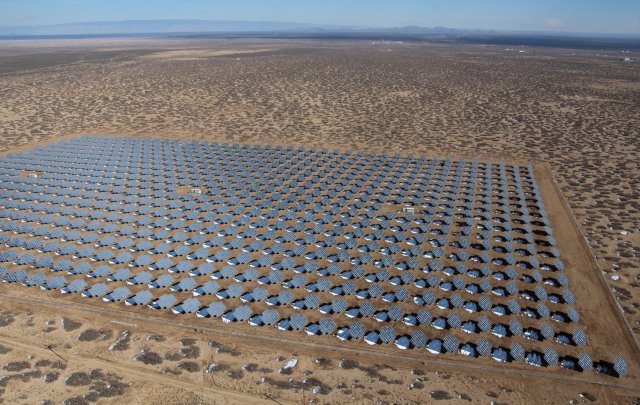The largest solar power system in the U.S. Army is coming online at White Sands Missile Range, N.M., and officials gathered Jan. 16, to mark the occasion with a ribbon-cutting ceremony.
The Energy Savings Performance Contract, or ESPC, project, awarded and managed by the U.S. Army Engineering and Support Center, Huntsville, provides the sprawling desert base with a new 4.465 megawatt solar photovoltaic system, guarantees energy savings of 35,358M British thermal units per year, and reduces their energy consumption by 10 percent, said Wesley Malone, Huntsville Center project manager.
“To date this is the largest solar project in the Army,” said Michael Norton, Huntsville Center Energy Division chief. “Projects like this are important because the impact of rising energy prices on installations has resulted in an adverse increase of utility budgets spent on existing, often inefficient or outdated equipment.”
“ESPC projects provide energy efficient equipment resulting in a lower utility consumption,” Norton said. “Lower utility consumption reduces the DOD utility bills and assists in meeting federal mandates.”
ESPC brings in private party financing for energy conservation measures at Defense Department garrisons. An Energy Savings Contractor, ESCO, provides capital and expertise to make infrastructure improvements on government facilities to significantly reduce Army energy, in exchange for a portion of the generated savings. In the case of the White Sands solar power system, Siemens Government Technologies, Inc., of Arlington, Va. was selected as the ESCO.
Along with being the largest solar project, there’s another first in how the system at White Sands Missile Range was funded.
“We used an Energy Services Agreement for the photovoltaic equipment along with the ESPC concept which was a first for the Army,” said Will Irby, Huntsville Center ESPC Program Manager.
An ESA is an arrangement whereby a third party owns, operates and maintains the power generation system and provides electricity to the customer. This third-party ownership mechanism allowed for a significant tax grant from that reduced the project cost by $6.1M, Irby said.
Construction of the $16.5M system started in July and was completed in December.
Siemens was the solar system designer, integrator and is the operator. Their industry team included project construction by Texas Solar Power Company of Austin, Texas, with solar modules and tracking systems by Solaria Corporation of Fremont, Calif., and inverter manufacturer SatCon Technology Corporation of Boston. The project is owned, through the Energy Services Agreement, by Bostonia Group, also of Boston.











